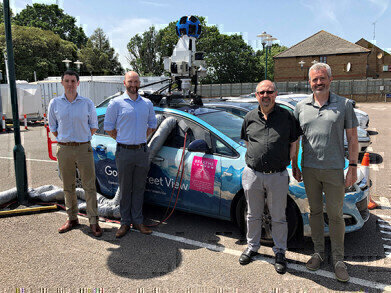Air monitoring
A breath of fresh air for Londoners
Aug 23 2019
The Breathe London project combines state-of-the-art technology with new data analytics to provide Londoners with a hyperlocal visual tool showing exposure to air pollution around the city. Google Street View cars mapping air quality as part of the project are relying on technology from LI-COR Biosciences to measure London’s air pollution.
One purpose of the project is to measure air pollution in London prior to, and after, the implementation of new low emissions zones. In these zones, high emitting vehicles will be charged a fee to enter on a daily basis. It is hoped that mapping data following these measures will reveal an improvement in air quality.
Instruments in the Google cars were specified and fitted out by LI-COR representatives in the UK, Air Monitors, using the LI-COR LI-7200 Enclosed CO2/H2O Gas Analyser as a key component. In addition to providing a fast, accurate measurement of atmospheric CO2 concentration, the LI-7200 also provides a time synchronization reference for all other analysers installed in the vehicle. The cars are operated from the National Physical Laboratory (NPL), the UK’s National Measurement Institute, with data analysis, validation and reporting supported by NPL and Cambridge University. Mobile measurements are complemented by a network of lower cost sensors, providing 24/7 measurement of key air pollutants across the city. CERC are also providing a city wide platform to disseminate the data to the public on the project website.
Results to date have also revealed interesting details relating to vehicle emissions, and the composition and health of the fleet operating in the city. While following a car for example, elevated levels of particulate matter and NOx when correlated with CO2 indicate, either an older, dirtier engine, or one with an inefficient abatement system. Such information is vital to improving the implementation of low emissions zones, and to providing cleaner air for London’s inhabitants.
Breathe London has been collecting data since November 2018 and was officially launched on 15th January 2019. It is a collaborative initiative between the Mayor of London, C40 Cities, CIFF, Environmental Defense Fund Europe, and Google Earth Outreach. The official launch was followed in April by the launch of the world’s first Ultra Low Emission Zone.
LI-COR Biosciences is a leading innovator in systems for plant research, gas analysis, drug discovery, protein research, and small animal imaging. From the first low-cost light sensor filtered for the waveband absorbed by plants, to pioneering the development of near-infrared fluorescence detection systems for image-guided cancer surgery, LI-COR strives to provide innovative solutions for researchers.
Scientists around the world use LI-COR technology to address important biological and environmental challenges in studies ranging from global climate change to cancer research.
Digital Edition
IET 35.2 March
April 2025
Air Monitoring - Probe Sampling in Hazardous Areas Under Extreme Conditions - New, Game-Changing Sensor for Methane Emissions - Blue Sky Thinking: a 50-year Retrospective on Technological Prog...
View all digital editions
Events
May 10 2025 Karachi, Pakistan
May 11 2025 Vienna, Austria
May 11 2025 Seoul, South Korea
Salon Analyse Industrielle & Instrumentation
May 14 2025 Paris, France
May 15 2025 Istanbul, Turkey






_(4427399123)-(2).jpg)












